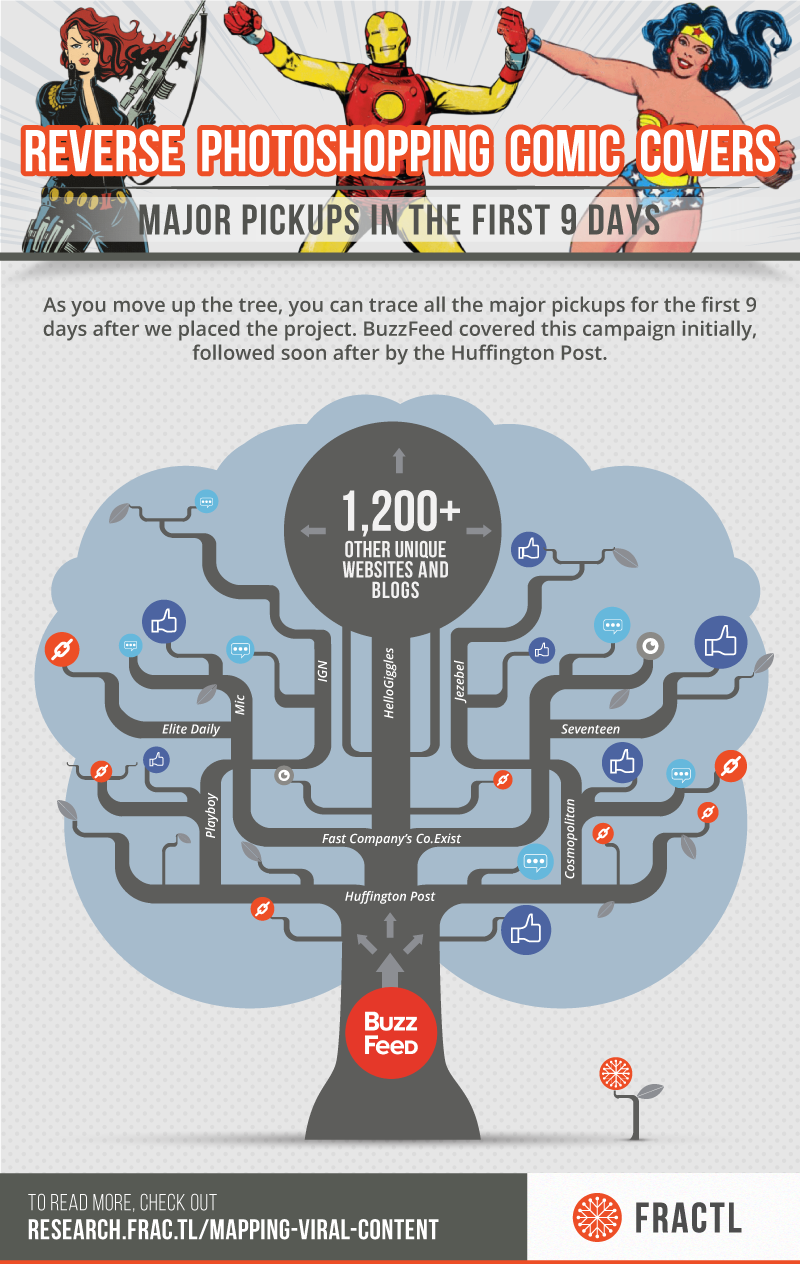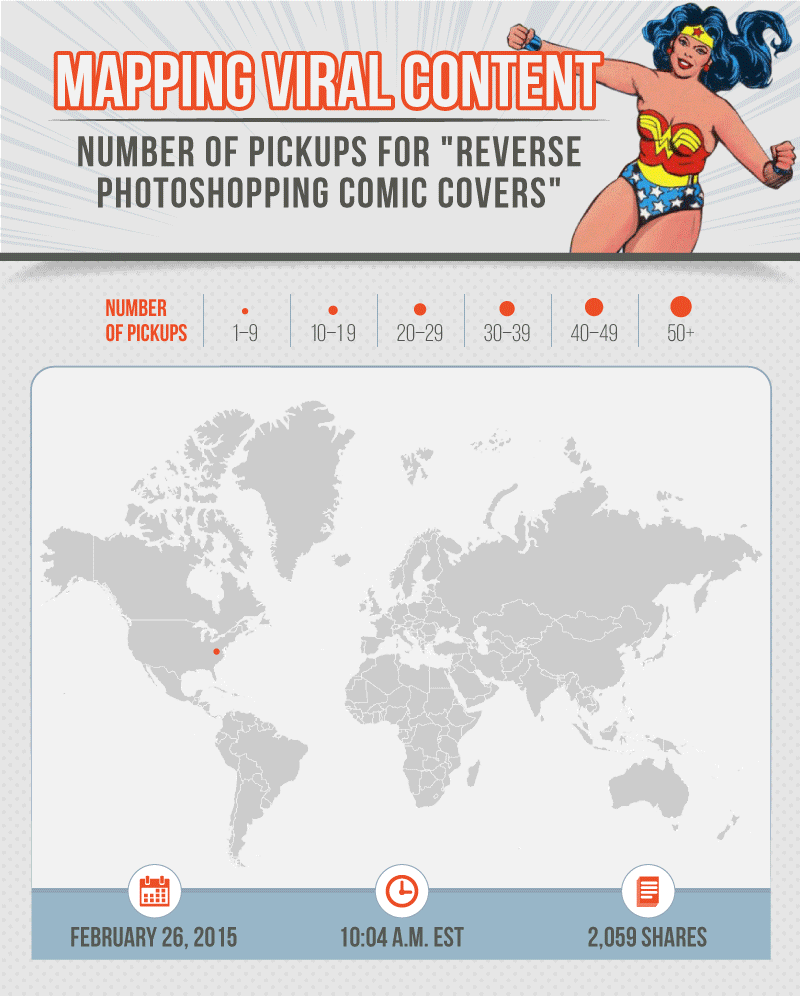The internet is a strange place. You never know when you’ll wake up to millions of people dumping buckets of water on their heads or having crises about the subjectivity of a color scheme (remember the ALS Ice Bucket challenge or #TheDress?). In some cases, we know where a phenomenon began, but we rarely understand how or why it swept the internet.
Who shares a piece of content second? How about third? When is the tipping point?
Here at Fractl, we have had the privilege of creating and analyzing viral content marketing campaigns. In the past, we’ve mostly looked at content. What are the characteristics of content that goes viral? But we were also interested in geography – what does the path to virality look like on a world map?
To trace how a viral campaign spreads across the globe, we looked at Recovery Brands’ Reverse Photoshopping Comic Covers. In February 2015, we Photoshopped comic book covers, giving all of the superheroes average American body types. This project rocked the web, receiving a total of 1,300 pickups and 105,000 social shares. In comparison, the industry average for a content marketing campaign is 27 pickups!
After BuzzFeed first published this project, it spread across the internet and the globe. We mapped the project’s pickups and shares from February 26, 2015, to March 6, 2015. In just nine days, this project was covered by websites and blogs in 25 countries and 20 U.S. states. Below, you can see a map of the pickups. The larger the bubble, the more pickups per location.
You can also check out highlights from this project below:
Methodology
Fractl is an industry leading content marketing agency, and we devote at least 30 minutes a day to link reclamation. To complete this process, we’ve developed a series of tools and processes to help us track when our content gets picked up by publishers. Using our records from Reverse Photoshopping Comic Covers, we identified each unique URL’s IP address and date of publication and used the IP addresses to pinpoint a location for that pickup.
Intrigued by these maps? Learn more about which emotions make content go viral and the DNA of successful content.





